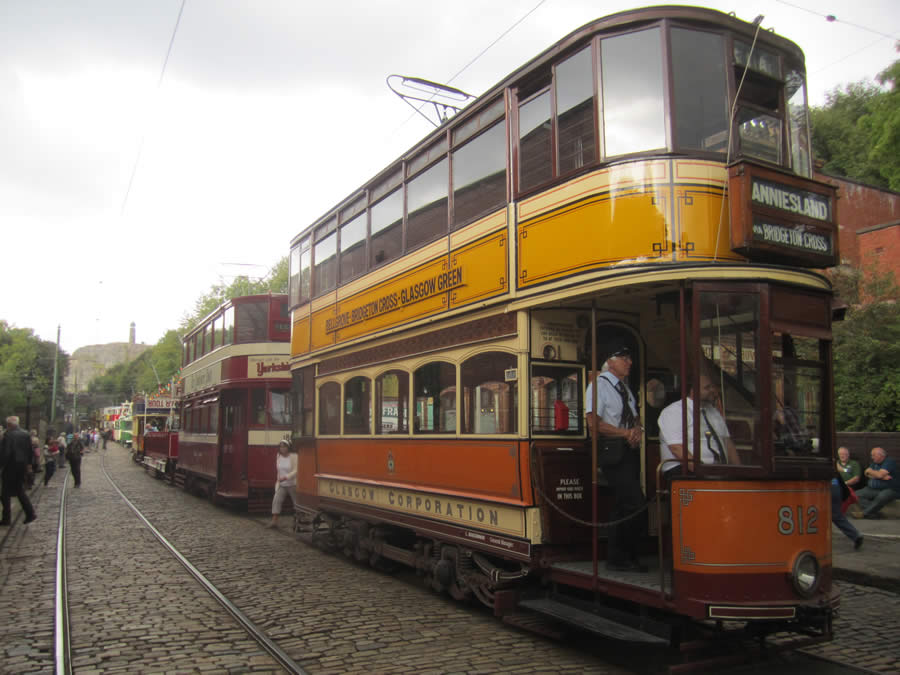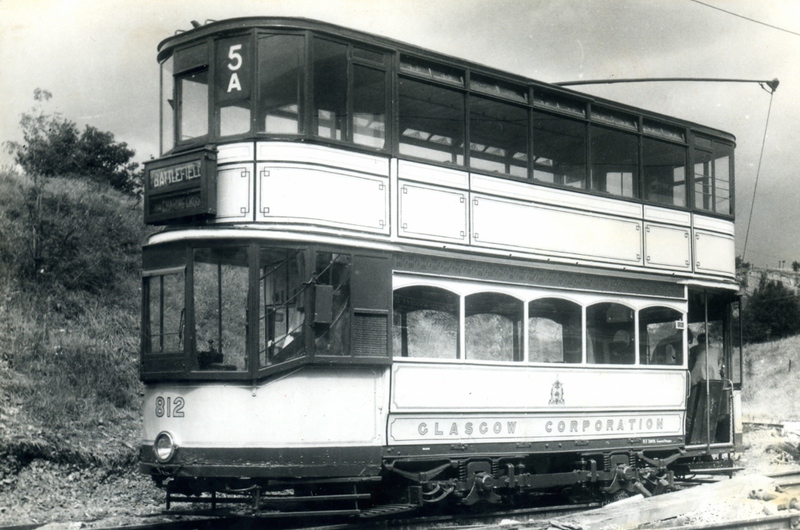Glasgow Corporation Transport No. 812

Photo: Jim Dignan
For most people nowadays the term ‘regenerative braking’ is likely to conjure up an image of state-of-the-art hybrid-engined motor vehicles. These attempt to reduce fuel consumption – and also CO2 emissions – by converting kinetic energy (forward momentum) into electrical energy by recharging an on-board electric motor for subsequent use in powering the vehicle.
Few people are probably aware, however, that this innovative approach to energy conservation and re-use was originally pioneered on electrically powered railed vehicles including trams and also on trolleybuses, where the energy that was recovered in braking was either used to feed back into the overhead power line or to provide a form of electrical braking to impede the vehicle’s forward momentum.
Improbable as it sounds – since it was originally built in 1900 in Glasgow Corporation Tramways’ Coplawhill Works as a relatively primitive uncanopied, unvestibuled open-top tramcar – some of 812’s contemporaries came to be fitted with the then highly innovative regenerative braking mechanism as part of a comprehensive upgrade and modernisation process that they received in the mid 1930s.
Glasgow Corporation’s policy over many years was to extend the life of its ‘Standard’ tramcars by subjecting them to a rolling modernisation programme in an attempt to ensure that comfort levels for passengers and crew were not too badly eclipsed by advances in rival motor bus design and technology. So, although 812 was one of the oldest trams in Glasgow’s fleet of over 1,000 ‘Standards’ that were built over a 25-year period between 1899 and 1924, it was progressively modified and upgraded during this period as tramcar design evolved.
Specification
- Type of tram
- Double deck, four-wheel, all enclosed electric tramcar
- Livery
- Orange and cream with yellow route band colour (though for most of its operational life it was a 'blue route' car.
- Seating capacity
- 59 (21 down, 38 up)
- Date built
- 1900
- Date entered service
- July 1900
- Manufacturer of body
- Glasgow Corporation
- Manufacturer of truck
- Brill 21E type
- Gauge
- Original: 4’ 7¾” Current: 4’ 8½”
- Motor
- MV101DR 2 x 60 hp (originally British Westinghouse 49B 30 hp)
- Controller
- MV OK26B with air box tops (originally BTH B18)
- Current collector
- Fischer Bow Collector
- Modification
Originally operated with green route colour, changing to blue in 1910. Top deck cover added in 1910 but balconies still open; drivers’ vestibules added two years later. Fully enclosed as part of modernisation programme in 1930. The truck wheelbase was extended to 8ft with roller bearings. Trolley pole replaced by Fischer Bow collector at around the same time.
Upholstered seating was provided (on both decks) in September 1930.- Withdrawn from service
July 1960
- Subsequent history
Acquired by TMS and moved to Crich on 13/8/60.
- Restoration history
In 1963 the tramcar was painted in 1950s livery.
In 1965 it was decked out with its current yellow route colour.
A substantial body overhaul was carried out in the late 1970s- involving separation of both decks.- Current status
- Restored to operational condition but not currently commissioned for service.
- Date started operating at Crich
- 1960 with a break between 1978 to 1981. Has operated in 42 seasons, most recently in 2015
- Total mileage covered at Crich
- 29,090
- Current location
- Depots
- 1900 – 1960Operational on original tramway
- 1960 – 1978Operational at Crich
- 1978 – 1981Undergoing restoration
- 1981 –Operational at Crich

